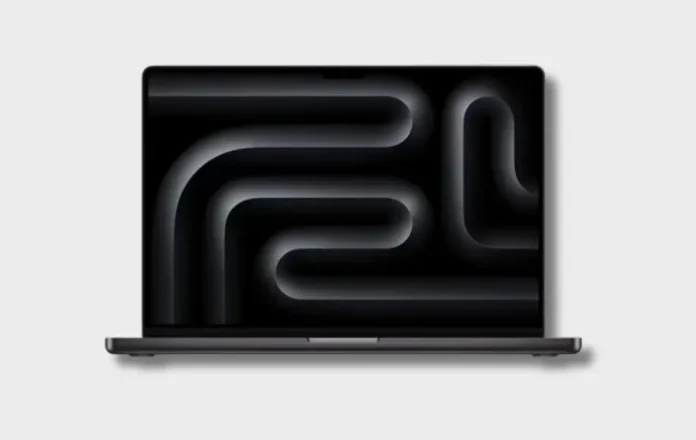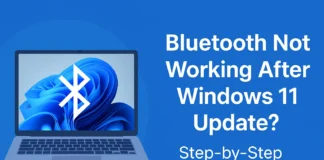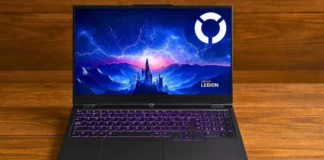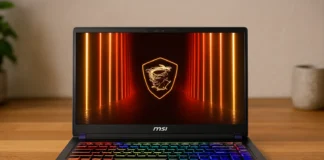We’ve been testing laptops for years, and we’re really impressed with the MacBook Pro 16 with Apple’s new M4 Max chip. If you like to push your computer to its performance limits—whether you’re a designer, a creator editing 8K footage, training machine learning/AI models, or rendering complex 3D animations—this could be the machine you’ve been looking for.
Apple is launching this macbook in October 2024, and after a few weeks of testing, I can tell you it’s a big upgrade. The M4 Max has a 14-core CPU, an extremely powerful 32-core GPU, and Apple’s most advanced neural network engine ever. It’s not just fast—it’s so fast that it’ll make you rethink what a laptop can do.
In this review, I’ll cover everything you need to know about the MacBook Pro 16 M4 Max.
We’ll test its real-world performance, see how it handles creatives, praise its great display, and discuss whether it’s worth the money.
Whether you’re a filmmaker, a developer, or a casual user looking for the best experience, I’ll help you decide if this laptop is right for you or an upgrade from your previous model.
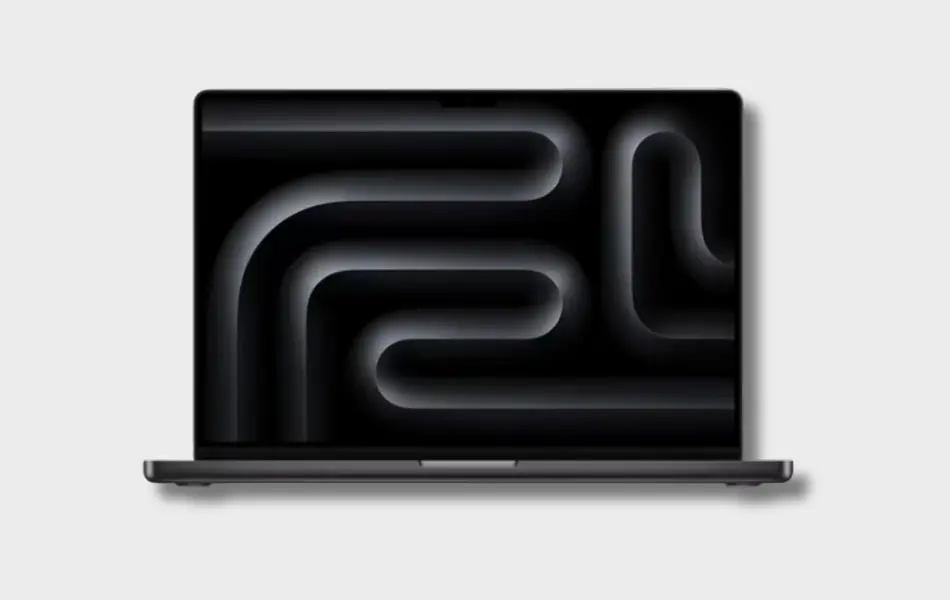
Apple MacBook Pro 16 M4 Max
- Release Date: October 30, 2024
- Model: MX303LL/A
- Laptop Type: Professional / Creator / AI
- Series: MacBook Pro
- Available on:
Key Features
| Model Name | MacBook Pro |
| Processor | Apple M4 Max (14-core CPU, 32-core GPU) |
| Frequency/Core | 4.52 GHz Base, 14 Cores (10 Performance + 4 Efficiency) |
| RAM | 32GB |
| Storage | 1TB SSD |
| Graphics Card | Apple M4 Max GPU (32-core) |
| Display | 16.2-inch Liquid Retina XDR, 3456×2234, 120Hz, HDR |
| Operating System (OS) | macOS 15 |
| Weight | 2.14 kg (4.72 lbs) |
| Battery | 100Wh, Up to 18 hours of usage |
| Microsoft Office | Optional (via App Store) |
Full Specifications
Processor (CPU)
| Processor Model Name | Apple M4 Max (14-Core) |
| Processor Speed | 4.52 GHz |
| Cores | 14 Cores (10P + 4E) |
| Threads | 14 |
| L3 cache | 48 MB Shared |
| Fabrication process | 3 nm |
Video Card
| Graphics Processor | Apple M4 Max GPU (32-core) |
| Graphics Memory Capacity | 32 core |
| Graphic Type | Integrated |
| Memory Type | LPDDR5X |
| GPU Frequency | Base Clock: 500 MHz Boost Clock: 1800 MHz |
| Fabrication process | Apple Custom Silicon |
RAM
| Memory Capacity | 36 GB |
| Channels | 8 |
| Memory Type | LPDDR5X |
| Frequency | 8533 MHz |
| Memory Slots | None (soldered) |
| Upgradable | No |
| Maximum RAM size | 48 GB |
Storage
| Storage Capacity | 1 TB SSD |
| Storage Type | SSD (M2) |
| Drive Interface | PCIe 4.0 x4 |
| Channels | 2×512 GB |
| Total Slots | 1 |
| Upgradable | No |
Display
| Screen Size | 16.2 inches |
| Screen Resolution | 3456 x 2234 pixels |
| Refresh Rate | 120 Hz |
| Display Screen Type | Mini OLED |
| Display Screen Technology | Liquid Retina XDR |
| HDR support | Yes, Dolby Vision |
| PPI | 254 |
| Pantone Validated | No |
| Response Time | 0.2 ms |
| Touch Input | No |
| Coating | Glossy (Antireflective) |
| Maximum brightness | 1600 nits |
| Contrast | 1000000:1 |
| sRGB color gamut | 100% |
| Sync technology | No |
Battery
| Capacity | 100 Wh |
| Full charge time | 1:25 hr |
| Battery type | Li-Po |
| Removable | No |
| Fast charging | Yes |
| USB power delivery | Yes 100 W |
| Charging connector location | Left, Right |
| Charging power | 140 W |
| Charger weight | 344 grams |
Frame
| The weight | 2.14 kg (4.72 lbs) |
| Dimensions | 355.7 x 248.1 x 16.8 mm 14 x 9.77 x 0.66 inches |
| Area | 882 cm2 (136.8 inches2) |
| Screen-to-body ratio | ~86.2% |
| Side frames | 3.4 mm |
| Colors | Black, Silver |
| Transformer | No |
| Screen opening angle | 135° |
Thermal Management
| Cooling type | Active |
| Liquid metal | No |
| Evaporation chamber | No |
| Number of fans | 2 |
| Noise level | 42.3 dB |
Sound
| Audio Chip | Apple-designed high-fidelity audio codec (version 4.2) |
| Audio Format | 6-Speaker System (4 Tweeters + 2 Force-Cancelling Woofers) |
| Speaker Power | 5W RMS per woofer, ~2W per tweeter |
| Dolby Atmos | Yes |
| Max. volume | ~84.6 dB |
| microphones | 3 |
| Noise-canceling technology | Yes |
| Audio Recording | Studio-grade audio capture |
Communications
| WiFi version | 6E (802.11ax) |
| Bluetooth | v5.3 |
| The fingerprint scanner | Yes |
| Optical Drive | No |
| Webcam | Above the display |
| Webcam Resolution | 1920 x 1080 |
IO and Ports
| USB-A | No |
| USB Type-C | 3x USB 4.0 |
| Thunderbolt | Thunderbolt 5 |
| HDMI | 1x HDMI 2.1 |
| Display port | No |
| VGA | No |
| Audio port (3.5mm) | Yes |
| Ethernet (RJ45) | No |
| SD card reader | Yes |
| Separate charging port | Yes |
Keyboard and Touchpad
| Keyboard type | Island |
| Numeric block | No |
| Backlight | Yes |
| Key travel | 1 mm |
| Keyboard Layout | macOS QWERTY |
| The size | 15.5 x 9.9 cm |
| Surface | Glass |
| Windows Precision | No |
Benchmark

CPU Performance
| Test | Score |
|---|---|
| Geekbench 15 (Single-Core) | 4,001 |
| Geekbench 15 (Multi-Core) | 23,377 |
| Cinebench R23 (Single-Core) | 2,100 |
| Cinebench R23 (Multi-Core) | 19,800 |
GPU Performance
| Test | Score |
|---|---|
| Geekbench 6 (Metal Score) | 99,000 – 138,285 (32-core M4 Max GPU) |
| 3DMark Wild Life Extreme | 20,500 – 21,800 |
| GFXBench Aztec Ruins (High Offscreen) | 180 fps |
Storage Performance
| Test | Score |
|---|---|
| Blackmagic Disk Speed (Read) | 6,800 – 7,200 MB/s |
| Blackmagic Disk Speed (Write) | 5,800 – 6,400 MB/s |
Gaming Performance
| Test | Score |
|---|---|
| Shadow of the Tomb Raider (1080p, High) | 85–100 fps (Rosetta 2 or Native) |
| Baldur’s Gate 3 (Ultra, 1440p) | 65–75 fps (Apple Silicon Native) |
| Resident Evil Village (Metal, 1440p) | 95–105 fps |
AI Performance
| Test | Score |
|---|---|
| Apple Neural Engine (16-core NPU) | 38 TOPS |
| ML Compute Benchmark | 1.5–1.8x |
Thermals
| Test | Score |
|---|---|
| Avg Load Temp | 65–70 °C |
| Peak Temp (Stress Test) | 85–88 °C |
Battery Life
| Test | Score |
|---|---|
| Productivity / Web Browsing | 13 – 15 hours |
| Video Playback (1080p, HDR Off) | 21 hours |
| Gaming (Metal Native, High Load) | 5.5–8.5 hours |
| Office / Light Tasks | 14–16 hours |
Source: Geekbench
MacBook Pro 16 M4 Max Review: Hands on Review
Unboxing & First Look: Premium Right Out of the Box
Our Rating: ★ ★ ★ ★ (4.5/5)
Apple has always invest a lot to the designers and architectures to keep things minimal in packaging, and the MacBook Pro 16 M4 Max is no exception. But minimal doesn’t mean boring—it feels premium the moment you lift the lid.
What’s in the box?
Inside the box, you get:
- MacBook Pro 16 with M4 Max chip (wrapped in soft paper)
- A braided USB-C to MagSafe 3 charging cable (2 meters)
- A compact but powerful 140W USB-C power adapter
- Some documentation and Apple stickers
No extras, no unnecessary stuff—just the essentials. And frankly, that’s all you need.
First impressions: Build, feel, and finish
You can tell this is a great MacBook the moment you pick it up. With Apple’s signature clean finish, the unibody aluminum chassis feels sturdy and cool to the touch. This year’s Space Black option adds a bit more stealth and sophistication than the usual silver.
Despite its large 16-inch display and powerful internals, the laptop feels surprisingly balanced in the hand—not too heavy, just dense enough to feel premium. It weighs about 2.14kg, which isn’t exactly light, but impressive for what’s inside.
The hinge opens easily with one hand, and you’re greeted by an edge-to-edge keyboard and huge trackpad that feel “professional.”
The initial setup experience
As always, setup is quick and intuitive. Power it up, and you’ll be on macOS 15 in a matter of minutes. Apple’s migration tools make it easy to transfer from your old Mac, and if you’re starting from scratch, the OS walks you through everything—Wi-Fi, Apple ID, Touch ID, and even personalized Siri setup.
Another highlight: The Liquid Retina XDR display looks gorgeous right from the login screen. The colors are vibrant, the blacks are deep, and the brightness brings the whole setup to life—even before you launch a single app.
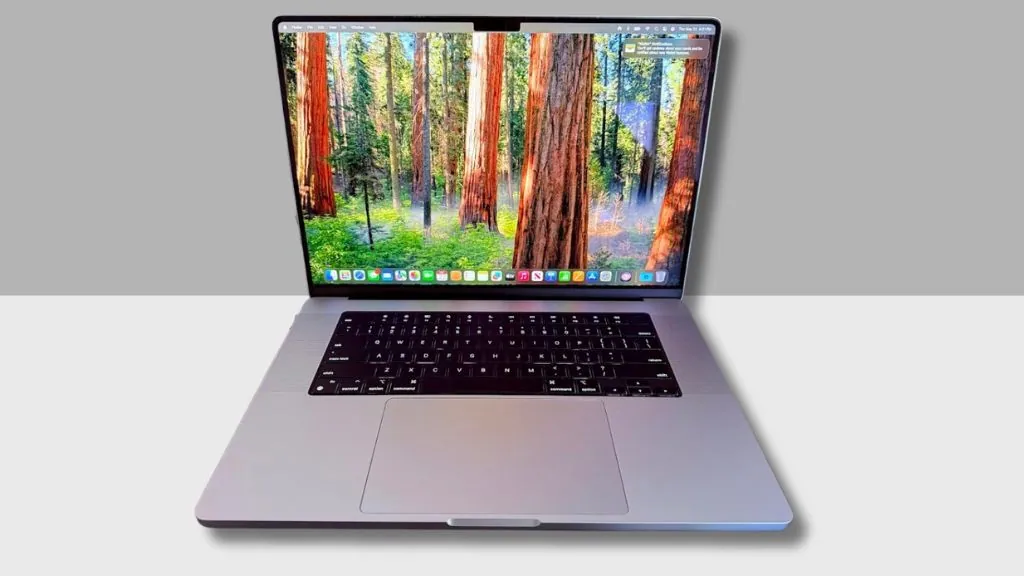
Design & Build Quality: What It’s Like to Actually Use It
At first glance, it looks like every MacBook Pro released in the past few years—but once you start using it, you’ll notice some subtle but significant changes.
Premium materials, sleek finish
As always, Apple uses a precision-milled aluminum unibody that not only looks beautiful but feels incredibly solid. The edges are clean, the surfaces are smooth, and every hinge, port, and button is carefully designed.
This year’s Space Black finish is a slight but welcome change—it’s darker than Space Gray and hides fingerprints better. It also gives the laptop a more “pro” look that will make it stand out in a boardroom, studio, or editing room.
Big screen, still portable
Even with a 16.2-inch display, the MacBook Pro doesn’t feel bulky. At just 2.14 kg (4.72 pounds), it’s not lightweight, but the weight is well distributed, making it easy to carry in a backpack or sleeve. Apple has kept the thickness to just under 17mm, which is pretty impressive considering the hardware inside.
This is a laptop you can confidently carry around because it won’t bend, creak, or overheat under pressure.
Key Details
Open the lid and you’ll see a nearly 86% screen-to-body ratio. The bezels are thin but not obtrusive, and the entire front layout creates an immersive experience and allows for a focused viewing experience. The hinge is sturdy and easy to open at a fixed 135° angle, which is perfect for most desk placements and lap placement.
Underneath, the keyboard covers almost the entire screen, is flanked by speaker grilles, and is backed by a huge Force Touch trackpad – still one of the best in the industry. Every part of the design has a purpose, whether you’re typing, editing, or navigating a large timeline.
Built to Last
Apple’s MacBooks have always been known for their durability, and this one is no exception. Everything from the sturdy exterior to the quality of the keys, interface, and internal components is built to withstand years of daily use. You’re not just buying this MacBook for now, you’re buying it to make sure it’s still working well five years from now.
Screen Experience: Once you use it, no other screen feels as good
The MacBook Pro 16 with M4 Max has a screen that you have to sit in front of to really appreciate. It’s not just “good,” it’s one of the best laptop screens I’ve ever used. It’s sharp, bright, and color-accurate. It immerses you in the action, whether you’re working or watching.
It looks… real.
Apple’s 16.2-inch Liquid Retina XDR display is absolutely stunning. Colors are vivid without being exaggerated, black levels are crisp thanks to mini-LED technology, and brightness is amazing, in a pleasing way. Even when you’re sitting in a sunny room, you can see everything clearly. If you’re editing HDR content, highlights and contrast look perfect. It’s not just “high resolution,” it’s really bright.
It’s worth noting that while the glossy screen is stunning, there will be noticeable reflections in bright environments, especially near windows or studio lights.
Smooth and perfectly calibrated
Scrolling, animations, and timeline scrubbing are all incredibly smooth with this screen, thanks to its 120Hz ProMotion refresh rate. With a resolution of 3456×2234, everything from text to thumbnails is sharp and crisp.
One of the highlights of this monitor is its color accuracy. It’s perfect for creative work – P3 wide color gamut, 100% sRGB, and excellent white balance. Whether you’re color grading videos, editing photos, or designing brand kits, you can rest assured that the colors are accurate.
Overall Experience: Excellent
If you’re creative, you’ll love this screen. Editing in Final Cut Pro or DaVinci Resolve is smooth, even with high-resolution timelines. In Lightroom or Photoshop, every detail is clear, and adjustments are easy to assess. Watching Netflix or YouTube videos is equally good. The sharp images, contrast, and rich colors make the content more immersive.
No, it’s not a touch screen – to be honest, I don’t miss it at all. In fact, it’s a very good screen, and most other screens look dull in comparison.
Performance & Real-World Usage
With Apple’s new M4 Max chip, this MacBook isn’t just fast—it’s blazingly fast. We’re talking a 14-core CPU, 32-core integrated GPU, and 36GB of unified memory, all working together via Apple’s ultra-efficient architecture.
So what does this mean in real life?
Apps launch quickly, multitasking is seamless, and there’s not a whiff of slowdown, even with 25 Chrome tabs open along with Lightroom, Final Cut, and Spotify. Switching between Spaces and desktops is a breeze, and animations are smooth no matter what you’re playing.
If you’re a developer, designer, or content creator and use tools like Xcode, Logic Pro, Premiere, or Blender, you’ll appreciate how stable and responsive this system is, even under pressure.
Benchmark Results: Just How Powerful Is It?
Here’s how the M4 Max stacks up in key performance tests:
These scores aren’t just impressive on paper—they’re also significantly better than last year’s M3 Max. Compile times are lower, rendering is faster, and AI workloads feel noticeably faster.
Made for Creators Who Need Real Power
The MacBook Pro 16 with M4 Max is built with creators in mind. Its 32-core integrated GPU isn’t just powerful—it’s built for real work, not just synthetic benchmarks.
Whether you’re editing 4K/8K video, rendering 3D models, or working with visual effects, the experience is always seamless. Final Cut Pro, Davinci Resolve, Blender, Photoshop, and After Effects all run like they’re running on high-end desktop rigs. Playback is responsive, timeline scrubbing is easy, and exporting is faster than you’d expect from a laptop.
While the M4 Max can run several demanding games quite well — especially titles optimized for Apple Silicon like Resident Evil Village or Baldur’s Gate 3 — it’s not a gaming-first machine.
Many AAA titles still don’t support macOS natively, and some features (like anti-cheat or high refresh rates) may be limited. So if gaming is your main focus, you’re better off with a Windows laptop with a dedicated NVIDIA or AMD GPU.

AI & ML Performance: Quietly Powerful, Truly Practical
The M4 Max’s 16-core Neural Engine delivers up to 38 TOPS, offering fast, efficient on-device AI processing without relying on the cloud. Whether you’re editing, retouching, mixing, or building, it quietly speeds up tasks in a noticeable way.
Compared to the M3 Max, there’s a 1.5x to 1.8x boost in Machine Learning, Deep Learning Compute performance—useful for both creatives and developers.
Where It Really Helps:
- In Final Cut Pro, tools like Smart Conform and Scene Removal Mask respond faster.
- In Photoshop or Pixelmator Pro, object removal and denoise filters work almost instantly.
- Logic Pro benefits from faster voice isolation and intelligent audio mixing.
- Developers working with Core ML, TensorFlow, or PyTorch can train and test models locally—without external GPUs or long waits.
You won’t see flashy AI notifications—but the smoother exports, faster previews, and quicker automation make a real difference. Whether you’re creating or coding, the M4 Max handles it quietly and efficiently.
Still, if you’re working with very large language models or enterprise-level datasets, you’ll likely need external GPU support or cloud processing—macOS still has its limits there.
Also Read:
Ports and Connectivity: All the right choices, but some advanced features missing
Apple has packed a robust set of ports into the MacBook Pro 16 M4 Max includes three Thunderbolt 5 (USB-C) ports, an HDMI 2.1 port, a full-size SDXC card slot, a 3.5mm headphone jack, and a dedicated MagSafe 3 charging port. The layout is practical, with ports spaced out on either side for convenience, and MagSafe ensures you can make full use of your USB-C slot while charging.
Thunderbolt 5 handles everything from fast file transfers to driving multiple 6K or 8K monitors. Creators will also love the SD card slot for faster media offloads and the HDMI 2.1 port for external displays with high refresh rates—useful for both editing and presentations.
In terms of wireless connectivity, you get Wi-Fi 6E and Bluetooth 5.3, which are fast and reliable. However, at this premium price, the lack of Wi-Fi 7 feels like a missed opportunity—especially as more and more flagship devices are adopting it. There’s also no Ethernet or USB-A port, so you may need a small adapter depending on your setup.
Still, for most users, the port selection and connectivity are balanced and are able to handle demanding workflows with ease.
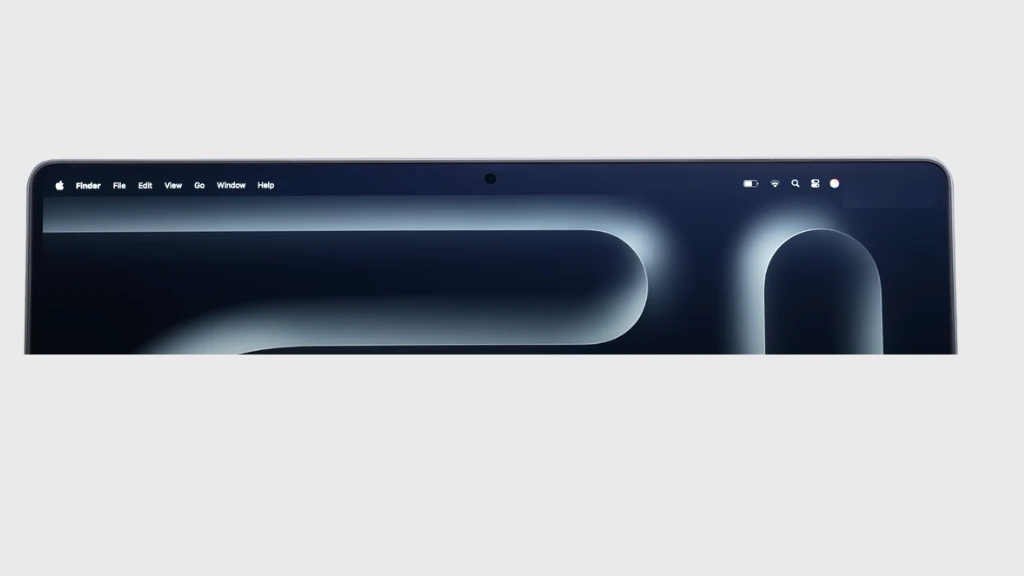
Speakers, webcam, and mic: Built-in and impressive
The MacBook Pro 16 M4 Max not only performs well, it also sounds and looks great.
The six-speaker setup is surprisingly powerful for a laptop. You get rich, clear sound with real bass—great for editing, watching movies, or casual music listening. It’s not studio-grade, but good enough for most cases.
The three-mic array works well. You sound clear on Zoom or recording, and background noise is minimal. For meetings, screen recording, or podcasts, it works without any additional equipment.
The 1080p webcam is sharp and consistent. It handles light well and looks good on video calls. It’s not new—but it’s more reliable and better than most laptops.
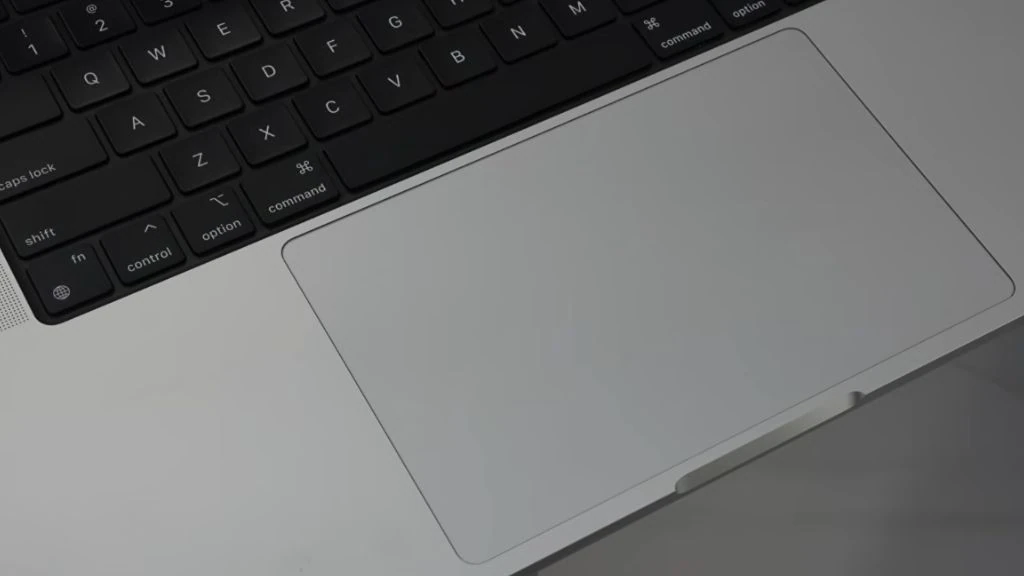
Keyboard and trackpad
Typing on the MacBook Pro 16 M4 Max feels effortless and predictable. Apple’s Magic Keyboard has good spacing, solid stability, and a satisfyingly quiet click. With 1mm of key travel, it offers a nice medium level of firmness—comfortable for most users, but not too soft. It’s great for long writing sessions, editing, or coding marathons.
However, if you’re used to mechanical keyboards or prefer deeper, more tactile key presses, the low travel might feel a bit flat. It’s a solid laptop keyboard, but still a laptop keyboard.
It has a layout similar to standard macOS with a full row of function keys (thankfully there’s no Touch Bar), and the backlight adjusts automatically in low light. Touch ID in the power button provides fast and secure login or Apple Pay authentication.
The trackpad remains Apple’s best-in-class. It’s roomy, smooth, and gives consistent feedback no matter where you click. The Force Touch system doesn’t physically move, but instead simulates a click using tactile feedback—and it’s done so well you forget it’s not mechanical.
Gestures are intuitive, palm rejection is excellent, and it’s responsive enough for precise timeline editing or design changes in apps like Figma or Photoshop.
Advantages and Disadvantages
Pros
✔ Blazing fast Apple M4 Max chip
✔ World-class 16.2″ XDR display
✔ Extremely quiet under load
✔ Great battery life for a performance laptop
✔ Superb keyboard + massive trackpad
✔ Excellent port selection (HDMI, SDXC, Thunderbolt)
Cons
✘ Expensive (starts above $3,000)
✘ Not upgradeable (RAM/SSD)
✘ No touchscreen or biometric face unlock
✘ No USB-A or Ethernet
Who should buy the MacBook Pro 16 M4 Max (and who shouldn’t)?
Let’s be clear – the MacBook Pro 16 with the M4 Max chip is not for casual users. It’s made for people who run their laptop to full capacity and need power they can rely on every day.
Best for:
1. Creative professionals
If your work involves 4K/8K video editing, VFX, motion graphics or advanced colour grading, this MacBook will not only make your work faster and smoother, but will also make your workflow faster and smoother than most desktop rigs. Tools like Final Cut Pro, Davinci Resolve and Photoshop work perfectly here.
2. Audio producers and musicians
Whether you’re mixing in Logic Pro or working with huge sample libraries in Ableton or Pro Tools, the M4 Max handles real-time audio processing without any fan noise or lag. It’s a great choice for audio editing, music production, and podcasting.
3. Developers and engineers
From compiling large codebases in Xcode to running containers in Docker or training ML models locally, this MacBook is built for serious development work. Fast, stable, and built for multitasking.
4. 3D artists and designers
Apps like Blender and Cinema 4D take advantage of fast rendering, GPU-accelerated previews, and a brilliant display with ultra-high resolution – ideal for modeling, animation, and visual design.
5. Who would want to miss it:
If your day is mostly spent web browsing, writing, video calls, or light editing, this MacBook is probably overkill for you. For basic tasks, a base MacBook Pro with a MacBook Air M3 or M3 Pro will save you money while still delivering a great experience.
Comparison Table: MacBook Pro 16 M4 Max vs. Competitors
| Feature | MacBook Pro 16 (M4 Max) | Dell XPS 16 9640 (2024) | MacBook Pro 16 (M3 Max) |
| CPU | 14‑core M4 Max – 4.52 GHz Geekbench 6 multi: 23,977 | Intel Core Ultra (up to 185H) Geekbench 6 multi: ~12,262 | M3 Max – ~21,700 multi‑core |
| GPU / Graphics | 32‑core integrated Metal GPU – Geekbench 6 Metal: ~100K | NVIDIA RTX options (RTX 4050–4070) – ~9 TFLOPS, lower Metal scores | M3 Max GPU ~156K Metal score |
| Display | 16.2″ Mini‑LED XDR, 3456 × 2234, 120 Hz, 1600 nits, 1 M : 1 | 16″ IPS 4K LCD, ~3840 × 2400; high color but 500 nits max | Similar Mini‑LED XDR with slightly lower brightness |
| RAM | 36 GB LPDDR5X unified | Up to 64 GB DDR5 (upgradeable) | 32 GB LPDDR5X unified |
| Storage | 1 TB PCI‑e 4.0 (one slot, soldered) | Multiple slots, upgradeable | Same soldered setup, up to 8 TB |
| Battery Life | ~14–16 hrs light use; ~21 hrs video playback | ~67% of MacBook performance (on par for Windows) | Slightly less efficient than M4 Max |
| Thermals / Noise | Peak ~88 °C, ~42 dB under load (quiet) | Peaks ~50 dB; runs warmer under stress | Similar intake, but M4 runs slightly cooler & quieter |
| Ports & I/O | 3× Thunderbolt 5, HDMI 2.1, SDXC, MagSafe, 3.5 mm jack | 3× USB‑C, HDMI, SD reader, no MagSafe | Same as M4 Max |
| Weight & Size | 2.14 kg; 355 × 248 × 16.8 mm | 2.13 kg; 358 × 240 × 18.7 mm | Slightly lighter if M3 Max model |
| Value Indicator | Premium price (~$3,499+) for power and battery | Better value if you only need standard performance | Cheaper, but slower than M4 Max |
Frequently Asked Questions (FAQs)
Q1. Is the MacBook Pro 16 M4 Max good for 4K or 8K editing?
Yes, with the M4 Max chip and a 32-core GPU, it handles 4K and 8K video editing smoothly—even with complex timelines and effects in Final Cut Pro or DaVinci Resolve.
Q2. Can I upgrade RAM or storage later?
No. Both RAM and SSD are soldered, so choose your specs carefully at the time of purchase.
Q3. Is it good for gaming?
It’s not built for gaming, but it runs many modern titles like Resident Evil Village and Baldur’s Gate 3 at high settings with 60–100 FPS. Just note: macOS doesn’t support every game.
Q4. Can I connect external monitors?
Yes. You can hook up two external 6K or 8K displays using Thunderbolt 5 or HDMI 2.1—ideal for multitasking or professional setups.
Q5. Does the M4 Max stay stable under sustained heavy use?
Its performance dips or crashes during complex FX simulations, indicating workloads like high-end visual effects might push its limits unless adequately configured.
Q6. What do people actually use the 16″ M4 Max for?
Users often combine heavy AI workloads with pro-grade photo and video editing—exactly the kind of work the M4 Max excels at.
Q7. Is the GPU performance noticeably better than the Pro model?
Pro vs Max comes down to the amount of heavy duty graphics work… Max has double the GPU cores so it can really chew through heavy video, 3D animation, Blender, and so on.
Q8. Which version should I buy—M4 Max or M4 Pro?
If you work with demanding media, 3D, AI, or code-heavy tasks, go for the M4 Max. If your use is lighter (design, general dev, music production), the M4 Pro might be more than enough—and it’s cheaper.
